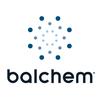
Content sponsored by:
Balchem Animal Nutrition
Turbo charging diets with increased dietary lysine
Published: November 4, 2025
Source : Laura Niehues, Technical Services Specialist at Balchem Animal Nutrition & Health
Spotlight: “The interaction between lysine and methionine in increasing milk fat and feed efficiency is a perfect example of why balancing for all essential amino acids is so important. In an ideal world, we could provide exactly the required amount of essential amino acids, but this is difficult with only rumen protected forms of lysine and methionine currently available in the market. In this case, if we only balance for lysine or methionine instead of both, we could be missing out on milk fat and making the cows less efficient.”
Lysine, together with methionine, are the first two limiting amino acids in dairy cow diets and hence limit performance. For many years there has been a focus on supplemental methionine which is usually the first limiting amino acid for milk protein yield. The opportunity and awareness of lysine has increased in recent years for a number of reasons, such as the capacity to increase milk yield, focus on lower protein diets, in some parts of the world lower soya diets, and because of the pressure for improved sustainability and lower nitrogen diets. Balancing for amino acids, specifically lysine and methionine, can allow for decreased protein in the ration and potential to improve efficiency of nitrogen use in the cow.
Lysine in the mammary gland
Although methionine has been extensively studied for its capability to reliably increase milk protein content, the response to lysine is less well understood. This may be because lysine and methionine have very different roles within the dairy cow. Lysine is taken up in excess of requirements for milk protein synthesis in the mammary gland whereas the mammary gland only takes up as much methionine as needed for milk protein synthesis. This allows lysine to be broken down and supplement the formation of nonessential amino acids if any are lacking. It can also spare other essential amino acids that behave similarly in the mammary gland, such as branched-chain amino acids (leucine and isoleucine specifically). This difference in how the cow uses these two amino acids may explain why the response to lysine is more variable.
A deeper look into lysine
In an attempt to better understand the response dairy cows have to increased metabolizable lysine, Arshad et al. (2023) conducted a meta-analysis of 13 research studies feeding rumen-protected lysine (RPL). They wanted to understand how varying levels of metabolizable lysine impact production in dairy cows and potentially identify an optimal level of lysine.
One important takeaway from this meta-analysis is that timing and duration of feeding supplemental lysine was very impactful for the production response. When cows were provided additional RPL (total lysine at 7.6% MP) during early lactation (< 90 DIM), milk yield increased 1.5 kg/day. Interestingly, the response to RPL was only 0.8 kg more milk when it was fed in mid lactation (> 90 DIM). This could be due to decreased intake during early lactation causing not only decreased lysine intake but would also decrease microbial protein flow. Combining decreased lysine intake and microbial flow could be why providing additional RPL was more impactful. Dairy cows may also have a greater requirement for lysine during early lactation.
In addition to feeding lysine in early lactation, the duration of feeding was also quite important. When cows consumed RPL for longer than 70 days, milk increased 1.5 kg compared to 0.8 kg if they consumed RPL for less than 70 days. Based on this, feeding RPL early in lactation and for a longer duration will provided the greatest milk yield response.
But what about milk components? Both milk fat and protein content and yield increased linearly when RPL was provided, meaning that the more RPL the cow consumed, the more her components increased. Interestingly, milk fat content was greatest when the metabolizable methionine was also higher (2.91% MP), alongside the elevated metabolizable lysine provided by RPL. At this same level of metabolizable methionine and lysine, feed efficiency was also improved.
The interaction between lysine and methionine in increasing milk fat and feed efficiency is a perfect example of why balancing for all essential amino acids is so important. In an ideal world, we could provide exactly the required amount of essential amino acids, but this is difficult with only rumen protected forms of lysine and methionine currently available in the market. In this case, if we only balance for lysine or methionine instead of both, we could be missing out on milk fat and making the cows less efficient. Further evidence of this is a decrease in plasma methionine when RPL was consumed, meaning with more lysine, the cow can utilize more methionine. Overall this would improve nitrogen and feed efficiency. With ever growing environmental concerns, improvements in nitrogen efficiency can be very impactful.
Feeding rumen protected lysine to dairy cows
All this begs the question of how much lysine do we really need to be adding to dairy rations? Though milk, protein, and fat yields all had a linear response to increasing metabolizable lysine, just adding endless RPL is not economically feasible. When lysine as a percent of MP increased from 6.5 to 8.5%, milk, FCM, and ECM increased 1.8, 2.5, and 2.4 kg/day, respectively. This type of increase is a great starting point for dairy producers and nutritionists that want to try balancing for lysine. Though it is also important to note that in this meta-analysis, the average amount of lysine was 7.6% of MP in the groups consuming RPL and modest milk and protein yield results were still achieved at this level.
But how do we get to the recommended level of lysine in an actual ration? Although the meta-analysis represents the amount of lysine and methionine as a % of MP, recent modeling and ration software programs such as Cornell Net Carbohydrate and Protein System (CNCPS) recommend representing amino acid requirements per unit of energy. Because the cow requires energy in order to make protein from amino acids, it is logical to represent amino acids requirements on a unit of energy (specifically metabolizable energy or ME) basis. To relate back to the meta-analysis, when lysine is 8.5% of MP, that equates to 3.2 g of metabolizable lysine/mcal of ME. Coincidentally, this is also the level of lysine recommended by CNCPS. For methionine, the recommended value is 1.14 to 1.17 g/mcal of ME.
Rumen Protected Lysine and TMR stability
As mentioned previously, lysine is low in traditional corn-based dairy rations. By estimating the amount of lysine that bypasses the rumen, we can get an idea of how much we are supplying to the cow, but if we are using heat treated sources to get the protein to bypass the rumen, lysine digestibility may be compromised.

Additionally, lysine is very hygroscopic, meaning it attracts water. For this reason, lysine is difficult to encapsulate to make it rumen protected and is particularly unstable in moist environments such as a TMR. It is critical that any encapsulated lysine is well protected and stable in TMR. An analysis of TMR stability of different encapsulated lysine products (Figure 1) revealed substantial loss of stability in some encapsulated lysine products, meaning the encapsulation is not sufficient in TMR and lysine is released from the encapsulation and will be free lysine in the TMR. When the cow consumes this, any free lysine will be immediately degraded by the microbes in the rumen and will not be available for the cow herself. The most stable encapsulated lysine product was AminoShure™-XL, with 98% TMR stability at 12 hours and it was still 91% TMR stable at 24 hours in the TMR.
For this reason, including a portion of the metabolizable lysine supply as RPL, such as AminoShure™-L (24.3% metabolizable lysine) or AminoShure™-XL (34.6% metabolizable lysine) is recommended. This provides a consistent and reliable source of metabolizable lysine.
Conclusions
Lysine has not had as much attention as methionine in dairy diets, but that does not mean it is less important when balancing rations. Based on all of these data, feeding RPL to dairy cows can be beneficial for increasing milk yield and milk fat yield, especially if started in early lactation. When reviewing rations in herds, it is important to not just look at methionine supply, but also lysine since these amino acids interact. Just balancing for one amino acid can cause the dairy to miss out on some production, especially milk fat and protein, and cause the cows to be less efficient.
When trying to balance for lysine and methionine, keep in mind that the most consistent way to deliver metabolizable amino acids is in a rumen-protected form but this is not always the most cost-effective way. Feeding a combination of bypass proteins and RPAA is more economical for the dairy and ensures that lysine and methionine needs are met. It is also very important to take into account the TMR stability when choosing the RPL product that is best for your herd.
Related topics:
Recommend
Comment
Share

Would you like to discuss another topic? Create a new post to engage with experts in the community.



